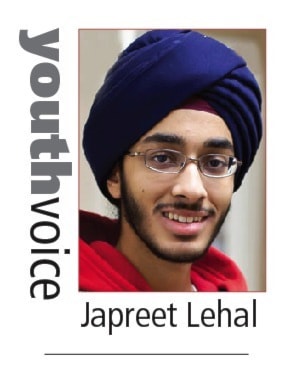In a society where digital media plays an increasingly important role in our lives, it is important to set reasonable limits on its consumption by youth.
Most recently, the American Academy of Pediatrics (AAP) recommended that parents set time limits on their child’s screen time and implement “curfews” for media usage during specific periods of the day, such as bedtimes and mealtimes.
The AAP also suggests that parents limit screen time to less than two hours a day, and monitor the types of websites and media their children are accessing. Children under two are discouraged from being exposed to any screen time.
It is also recommended that parents not place televisions or Internet devices in their child’s bedroom. Furthermore, parents are encouraged to view digital content with their children, instead of kids simply viewing content alone.
Youth and children in Canada consume an average of seven hours and 48 minutes of screen time per day, according to the 2012 Active Healthy Kids Report Card on Physical Activity for Children and Youth. While social media platforms, television, video games, tablets, and cellphones certainly have their benefits, excessive use may lead to negative effects.
According to the Mayo Clinic, high levels of screen time are linked to obesity, behavioural issues, violence, and problems in sleep schedules and academic performance. Additionally, valuable time that could have been spent engaging in physical activities is also cut short when youth engage in excessive digital media consumption.
Parents should also try to become good role models. A study released in July by a centre at the University of Pennsylvania found that children emulate their parent’s TV consumption pattern. For instance, if parents watch an hour of TV, this translates into an extra half hour for children. Hence, parents should limit their own digital media usage to reasonable levels, so their children are able to make better decisions.
Further, parents should strive to engage in outdoor activities and an active lifestyle to ensure they are able to spend quality time with their family, while helping to build healthy habits in their children.
Certainly, as Media Smarts notes, positive television programming, such as educational programming, news channels, and documentaries, can play an important role and be beneficial. Parents should encourage these alternative programs for children, as substitutes for content that may not add value to a child’s educational and social development.
In its recent report, the AAP, in addition to making recommendations to parents, also makes suggestions to schools on media consumption. School physicians or health personnel are encouraged to inform educational institutions and boards about media education programs, the need for rules in relation to school tablets, health risks of excessive and unsupervised media usage, and other important points.
Starting with our local school districts, we can place an even greater emphasis on teaching both elementary and high school students about the different aspects of their media usage. Images and themes of violence, sexuality, body image, and drugs/alcohol often appear in media, and students must learn how to differentiate these distorted images from reality. Planning classes in high schools can also place a greater emphasis on teaching students about the content they view. Teachers can find excellent resources to teach students about digital media at: www.mediasmarts.ca/teacher-resources.
With youth being exposed to increasing amounts of digital media at a younger age, parents, schools, and children must learn how to effectively navigate the digital world to take advantage of its positive aspects, while protecting themselves from the downsides that come from excessive and unsupervised usage.
Japreet Lehal is a student at Simon Fraser University Surrey. He writes regularly for The Leader.
